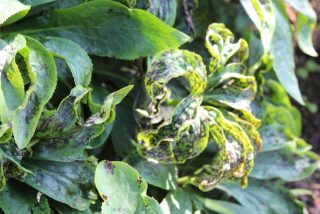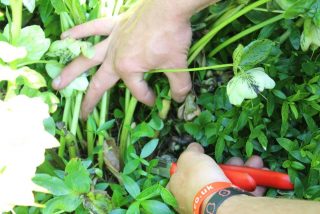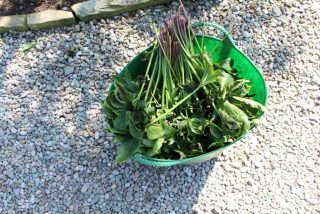Hellebore Woe
We would not want to miss our hellebores as they lighten gloomy end of winter days and provide structure and colour throughout the spring. Now that their flowers have finally faded, we take them off, leaving a few carefully selected ones to go to seed and hopefully add some exciting hybrids to the collection.
Unfortunately, hellebore populations are increasingly under threat from an insidious disease which is commonly known as ‘black death’. It is believed to be caused by a newly described virus called Helleborus net necrosis virus. The damage caused by this virus becomes apparent during the spring, leading to stunting of new growth and the emerging of black veins on the leaves, flowers and stems.



Against the general recommendation, we did not dig up the plants entirely, but left them in the ground, hoping that the re-growth might not show the signs of infection. This might be too optimistic, but we will watch the infected plants very closely and destroy them immediately in case the signs re-appear.
